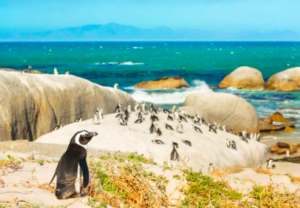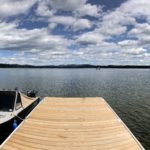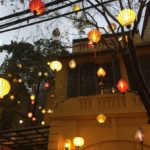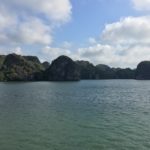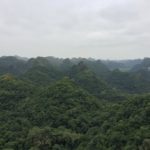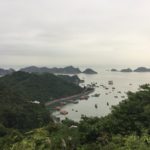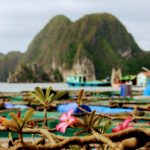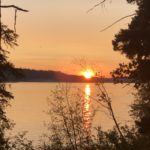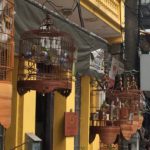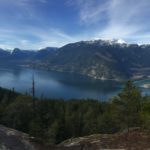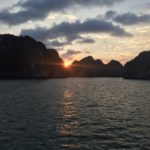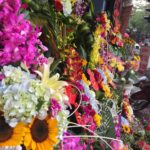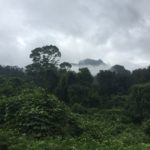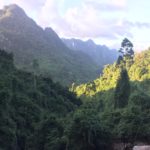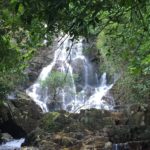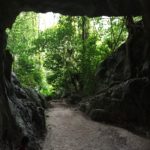Reflective Blog Posts
For my reflective blog posts I have chosen to write my reflections from 3 sources that were provided in my Policy and Planning course. The reason I chose these particular sources is that they can all be linked together to form a short literature review (of sorts), based on the topic of Mass Tourism.
Reflective Post #1- The ‘New Tourism’ Revolution by Auliana Poon
Poon’s article focuses on the rapidly changing tourism industry. She describes how with the global trends consumers are looking for a different type of tourism than what ‘Old’ tourism offers. With the increase in environmental awareness and the desire for new products and new destinations, tourists are moving away from the traditional mass-marketed products and resorts and towards a more authentic experience. She mentions the terms ‘new and old tourism’ and the shifting dynamics that the industry is undergoing in order to remain relevant to the times. Poon states that ‘old tourism’ can be characterized by mass, standardized and rigidly packaged holidays, hotels and tourists, where the future of tourism or ‘new tourism’ would be characterized by flexibility, segmentation and more authentic tourism experiences. The article also breaks down what tourism industry players must do in order to compete in the changing market.
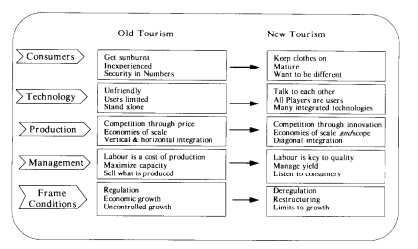
- Put consumers first
- Be leaders in quality
- Develop radical innovation
- Strengthen the firm’s strategic position within the industry’s value chain.
- Put the environment first
- Make tourism a lead sector
- Strengthen the distribution channels in the market-place
- Build a dynamic private sector
What I find to be extremely interesting that this was written in 1994 and even today is extremely relevant. We can see that there are still industry players that focus on mass marketing, mediocre experiences but in an age of travels craving unique experiences these players are quickly becoming irrelevant.
Reflective Post #2- Crowded Out: An Overtourism Video Documentary (Week 8)
The video documentary: Overcrowded, takes a look into the affects that overtourism plays on both the local community as well as the site itself. What once was considered a win-win relationship between locals and tourists has since become a relationship based on profit and resentment. “We take our holidays in other peoples homes (Overtourism documentary, n.d.)”. I found this to be extremely eye opening by the simple truth behind it. As a society we have gained the need to leave our homes in search of different experiences and memories but havent been giving a second thought about the affect tourism plays on the sites we visit.
The documentary interviews locals within areas that experience higher numbers of tourists in order to see their perspective on what is happening to their homes. It was discussed how locals feel like everyday is a continuous fight to live their lives. From simple things like taking public transportation to get to work, or going to the market to pickup food, it seems that tourism has been a thorn in the locals side. With the rise of tourism also comes the rise of prices, and this increase has ended up forcing locals to leave their homes in search for cheaper living. In places like Venice, Italy we see mass crowding within the canals, the extent of which I will briefly discuss in my next reflective post. We see tourists changing the local markets as they don’t intend to buy the local food therefore the vendors change the product they sell in order to make profit. These sites are losing their identity, and tourism has started to turn authentic culture into tourist attractions. A quote that I found really resonated with me was “A destination can die from success (Overtourism documentary, n.d.)”. Throughout my TRU experience, learning the many sides of tourism, a common theme that comes up is the role tourism can play in the degradation of a destination. While on one hand tourism can be a positive there are times if poorly managed, or lack of rules and regulations actually destroys the site that we are traveling to see. If there are no limits within tourism what will be the final cost of the destinations?
The documentary highlights six attributing factors to the massive growth in the tourism industry: 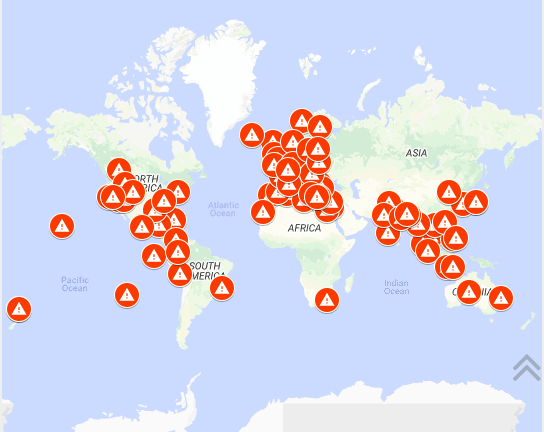
- Cheap flights
- Travel Writing
- Honeypot sites
- Cruise liners
- Holiday Apartments
- Demographics
If the industry is to continue on a similar path we will end up destroying the sites for future generations, however if proper policies and planning were to happen, and we were to limit or regulate the amount of incoming tourists we might be able to find a balance that helps both the tourist as well as the local community and destination. In my next reflective post I will discuss the effect that a worldwide travel closure plays on sites that have been victimized by overcrowding, and the hope that can come from a pandemic for the tourism industry. A map of current places experiencing tourism overcrowding
Reflective Post #3- The Impacts of Covid-19 on both Venice Canals, and Galapagos Islands (Week 8)
These articles focus on destinations that have been affected by the tourism industry in different ways but since the spread of Covid-19 have started to see positive changes that give hope for destinations facing similar issues. The first articles focuses on the Venice canals and the return of some species since the outbreak. For years Venice has played host to swarms of tourists year round and the mass tourism that has taken place took its toll on the canals and the species that once lived in the waters, however with the closure of travel Venice has seen the return of fish, swans and even dolphins.
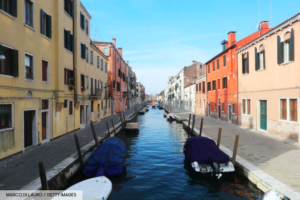
The article that discusses the Galapagos Islands provides the reader with information regarding the increasing record numbers of Galapagos penguins and flightless cormorants. While part of this can be attributed to the La Nina climatic phenomenon, which provides more food for the birds, a large part of the increasing population can be tied to the Covid outbreak. With the decrease in tourism there have been limited disturbances to the birds nesting areas. It is my hope that from seeing these positive changes in sites that we, as a society, can change the way we do tourism and provide proper planning and maintenance to ensure that we no longer add to the degradation of sites.
